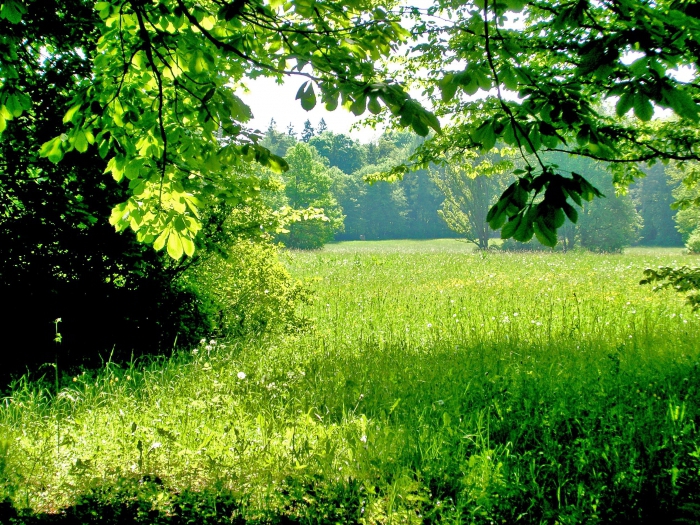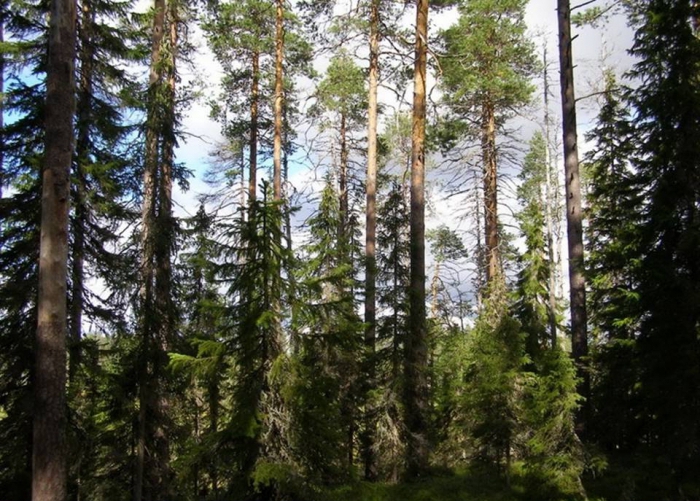Environmental legal relations are relations in the field of health improvement, protection and improvement of the natural environment. They are also aimed at eliminating and preventing the harmful effects of human activity. It is specifically regulated by environmental law.

Classification
Environmental legal relations include their direct content, as well as subjects and objects. Based on this generally accepted structure, various types of their classification can be distinguished. Such legal relations can be distinguished by subjects (i.e., participants), objects, level of legal protection, etc.
One of the most common classifications is based on types of social conservation interaction.
It includes environmental legal relations existing in the field of state regulation. This group is the most extensive and multi-layered. It, in turn, is also divided into several additional varieties.
- Accounting for natural resources. It is necessary to ensure environmental monitoring by the state, as well as to maintain various cadastres (land, water, forest, etc.).
- Protection of environmental well-being. This includes the application of administrative and judicial protection of the rights of the state or citizens. The most obvious example is the punishment for poaching in the form of recovering the value of illegally caught fish. The same goes for unauthorized deforestation, when a fine is imposed, commensurate with the cost of restoration work.
- Ecological use. This type includes a system for permitting the disposal of natural objects (registration of property rights and entrepreneurship, transactions, licensing of forest and water use, etc.).
These environmental legal relations require that one of the parties must be the state.

Types of Legal Relations
Another wide group includes legal relations related to the right to property in the field of natural resources.
- Firstly, the purchase and sale of land, as well as their privatization, carried out in accordance with the laws of the country. This also includes the transfer by the state to an individual or legal entity of land with natural objects located on them (forest areas, water bodies, etc.).
- The exercise by the owner of his authority regarding the exploitation of land, as well as the resources located on it.
- Termination of ownership. It may be associated with the sale or exchange of land, as well as forced seizure, if the use of resources is irrational.
One of the parties to these legal relations must necessarily be the owner of the land or objects on it.
The last group concerns property rights to land. They can be fixed by the right to inherited possession of the land for life, permanent or unlimited use, as well as easement (limited use). In this case, the powers relate only to the owner of the land, and not to land users or landowners.
Another classification affects the content of environmental relations. This is an important phenomenon. Material environmental relations affect specific material objects that are under environmental legal protection. Procedural cases include environmental protection activities.
And finally, the last classification. Regulatory environmental legal relations are formed from the implementation of measures to protect nature. Such measures are necessary in case of failure to comply with the statutory rules for environmental protection.

Objects of environmental legal relations
To begin with we will understand in terms. Objects of environmental relations may be natural complexes and the entire environment as a whole, as well as the very procedure for the protection and operation. This concept is of paramount importance.
Natural objects have a number of properties that affect the content and nature of emerging environmental legal relations. Their natural origin and relationship with the outside world leave a certain imprint on any relevant legislation. For example, the subject of legal relations during his activity cannot harm the migratory flights of bird flocks. Thus, the laws of nature are reflected in the laws of law.
There are three main types or levels of natural objects that are considered as objects of environmental legal relations.
- Matter with homogeneous properties: water, forest, land, wild fauna, subsoil, etc. In order to systematically regulate the legal relations around them, separate complexes were created: water-law, land-law. Each of them has its own legislation, which stipulates all the key points related to the use of these resources. These are codes that are constantly updated, depending on the requirements of the time.
- Many natural complexes include several similar natural objects, which were described above. Therefore, legal relations for each of them have their own specifics and are prescribed separately (for example, it can be medical and recreational areas or protected areas).
- All natural environment. The occurrence of environmental legal relations in this case is possible, for example, after revealing the excess of the permissible level of harmful substances in the air, soil, which affect all life around. Those responsible for violations of this scale fall under the legal influence of the state.

The subjects of environmental relations
This is the opposite of the previous one. The subjects of environmental legal relations are persons whose powers or obligations to protect the environment are stipulated by special law. There is a significant difference between authorized and obligated persons. Consider an example. Assume that the relationship relates to water easements. Authorized persons shall be entitled to water their cattle from a specific reservoir. The one who owns this natural object becomes a obligated person. He must provide the authorized person with all the necessary resources so that the latter can water his cattle.
Powers can be either general or special. The former are universal rules and are intended for everyone. For example, the law of general environmental management applies to any subjects of legal relations, while the special applies only to a certain circle of persons. This may be the case with rare species of northern animals, whose use is a priority for indigenous peoples who are accustomed to rationally use local natural resources in their lives.
In this case, do not confuse the subjects of environmental relations and environmental rights. These are different stories. Unlike the previous case, any person can be a legal entity, since nature protection is enshrined in the Constitution of the Russian Federation as an obligation of every citizen (Article 58). For example, any legal or natural person is obliged not to harm the environment.

Legal Relationships
Any legal act begins with this.The basis for the emergence of environmental relations is not just an environmental legal norm, enshrined in law. For example, in order to obtain rights to a land plot, it is necessary to register property, obtain all necessary documents, and only after that it will be possible to enter into interaction. So, the person who bought the land becomes the subject of legal relations to protect and protect the soil from erosion and other harmful and adverse effects of economic activity. After this, the owner may be obliged to provide (pay) to the neighbors land reclamation and land reclamation services. After the soil cover is restored, the legal relationship is terminated. The basis for the emergence of environmental relations is in this case, a change in the state of the soil on the land.
Action and inaction
Legal behavior in human terms can be divided into inaction and action. These are opposite phenomena. Actions may be lawful and unlawful. For example, if a person carries out reclamation activities in the prescribed manner, then this is the first case. If the land owner does not license his actions in any way and violates the established rules, then his actions are unlawful. It is prosecuted.
Inaction of people can also be lawful and unlawful. The conservation of a degraded land and the termination of its operation for the period necessary for restoration is the first case. If the soil is to be used, and it is abandoned without regard to the proper termination of operation, then such inaction may become unlawful. These principles include the concept of environmental relations.

Legal fact
Environmental standards and legal relations state: between the legal relationship and the legal norm, there is a link, which is the legal fact of what happened. It can be expressed in the economic behavior of a subject or an event of a natural nature. If an individual is engaged illegal hunting it is a fact of behavior followed by responsibility. This will happen after the emergence of legal relations with the state. The opposite case: the number of certain individuals may exceed or fall below the permissible level in the ecosystem for a natural reason. If this happens, the activity (and this is also the legal relationship) of the regulatory state structures to control the number of species begins.

Types of Legal Facts
For them, too, there is a classification. Legal facts are divided into three types.
- Legal facts - this is the basis for the emergence of environmental relations. Example: a citizen applies for a license for legal water use. If everything happens in the manner prescribed by law, then the state issues the necessary permission.
- Changing facts - incidents that entailed a change in existing relations. Example: the owner of the forest leases part of the object for logging. After that, the types of environmental relations between the owner and the state environmental authorities change. If after legal actions of the subject there is a need to protect any object of nature, this may serve as a reason for limiting or final suspension of the owner’s right to use the object.
- Legal facts - because of them, the termination of environmental relations may occur. Most often this is a violation of the law. Example: a subject in his activity ignores legislative acts on the procedure for using natural objects (for example, fauna).
Ownership of land and other natural objects
Environmental relations often involve such a thing as the right to own natural objects.A subject can possess or hold them. Ownership may be partial or complete.
The subject of full ownership may be administrative and municipal entities in Russia. An example may be Republic of the Russian Federation. In the case of full ownership, the state has the right to prohibit the conduct of economic activity on the territory of these lands.
Another right related to natural objects and land is the right to use. The owner can dispose of both the territory and natural objects on it. State bodies of local self-government can manage their property with the help of various separate enterprises, organizations and institutions, as well as provide these natural objects to citizens for use.
Disposal and nature management
An environmental right is also important. It is a set of rules that govern the rules for the use of environmental resources.
The right of disposition allows an entity to determine the legal status of a natural object. In particular, it defines the category to which the object belongs, and also indicates the purpose of its use. This procedure is required when transferring a site (for example) to the ownership, use, rental or ownership of a specific organization or citizen. As for the categories, they determine the nature of each object. For example, it can be natural resources, land, water, etc. Defining a category is the first step at the disposal of natural objects. The second step is to provide or withdraw them.








